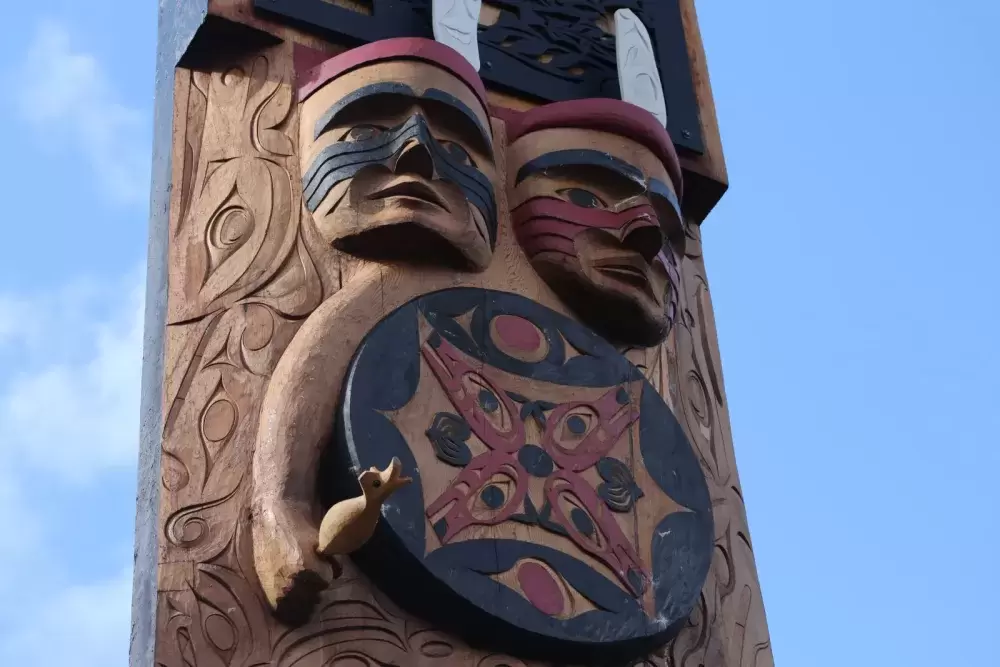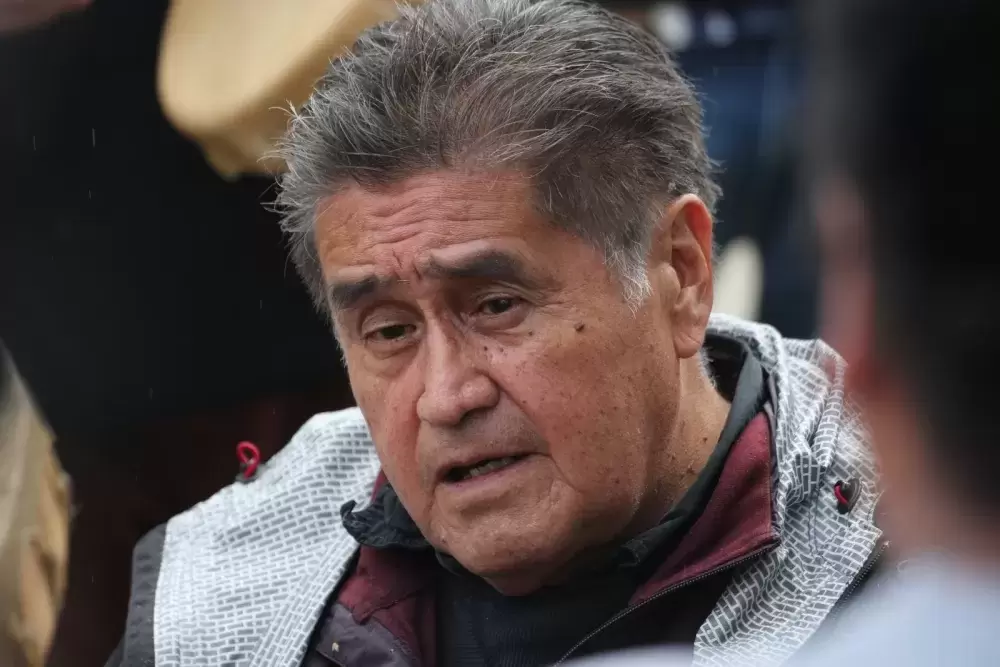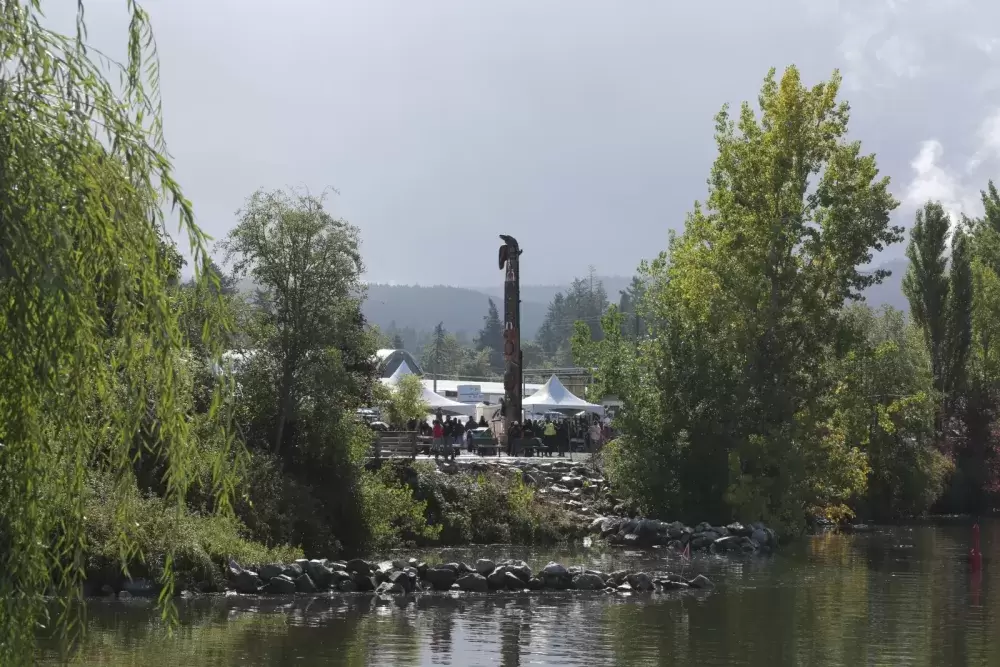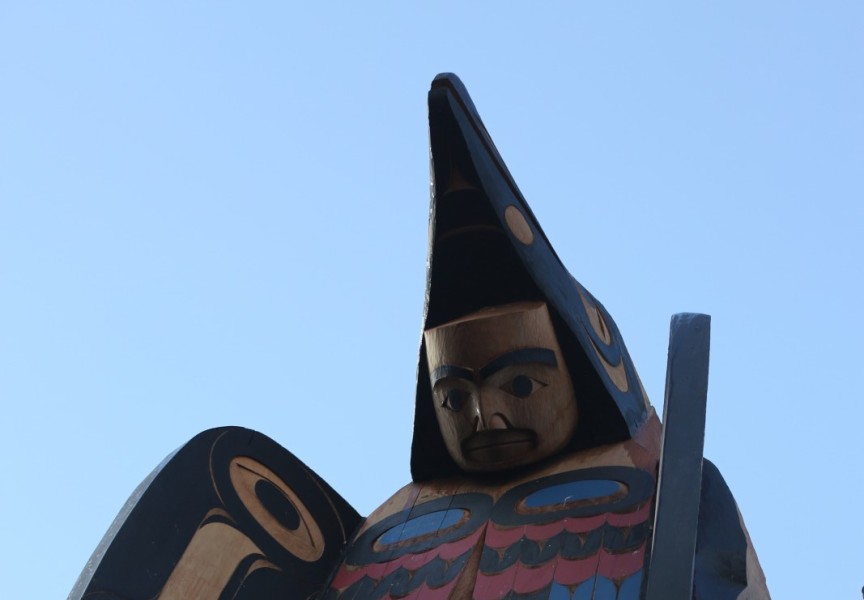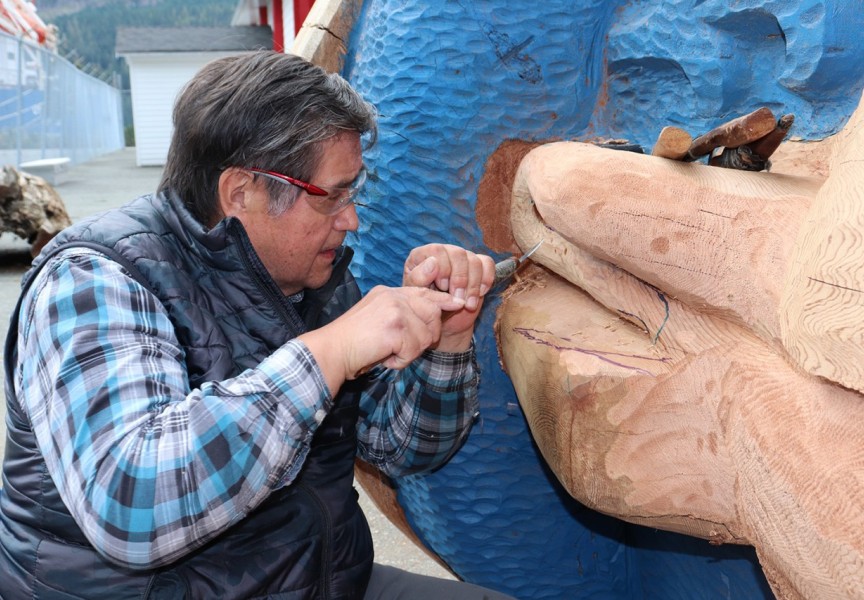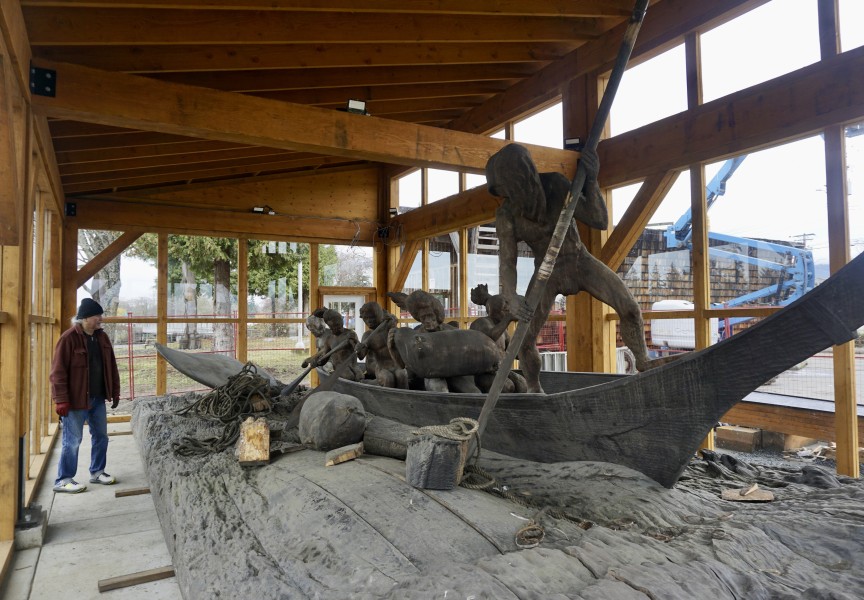As its eyes look east toward the rising sun this autumn, the carver behind a totem pole recently raised by the Somass River is stressing the piece’s importance of honouring women.
“The pole stands for our women,” said Tim Paul, who unveiled the project on Sept. 18 at Port Alberni’s waterfront, “most importantly is language, the cultural teaching.”
The Hesquiaht carver named the pole n̓aasn̓aasʔaqsa (pronounced ‘naas naas uksa’), referencing the first woman. Paul recalls a story told by his aunt Alice Paul in 1989, when another totem pole he carved was raised in the Canadian Museum of History’s Grand Hall in Ottawa.
“This is where she referred to the beginning, the first woman, n̓aasn̓aasʔaqsa, because women are our knowledge keepers,” he recalled. “That’s where that name comes from. But definitely the pole is honouring our ladies.”
What began as a windfallen cedar found in the forest of Huu-ay-aht territory eventually became the 37-foot piece that now stands over Port Alberni’s Victoria Quay.
The project was initiated by the First Nations Education Foundation in 2018 to mark the United Nations International Year of Indigenous Languages in 2019. When the pole was unveiled the education foundation noted that almost three quarters of the 60 or so Indigenous languages that are still spoken in Canada are at risk of being lost within a generation. Thirty-four of these Aboriginal languages exist in British Columbia.
“If these languages become extinct, Indigenous nations risk losing their cultural identities forever,” stated the education foundation.
n̓aasn̓aasʔaqsa stands on the site of Noopts’ikapis, a historical Tsehshaht village where people once lived by the Somass River. On a patch near a former helicopter pad, the pole is accessible to the public at the edge of San Group Property, where the company operates a sawmill.
As has been in the case with his other totem poles, maintenance will be required as the elements take their toll on the piece, said Paul.
“It will have to be touched up, as years, the weather and everything else gets a hold of it,” said Paul. “It will be up to the young people, the local tribes.”
The pole has so far attracted considerable interest over its first days of standing. Hundreds showed up for the unveiling on Sept. 18, and a Sept. 30 walk organized by the Tseshaht First Nation for Orange Short Day, or the National Day for Truth and Reconciliation, is scheduled to stop at n̓aasn̓aasʔaqsa.
“It’s alive now and we can talk to it,” explained Paul. “It’s really up to the young people now to approach that with all of the history, all of the names and all of the songs that are attached to it – that they lay out to making change, making a good life and good path for themselves.”

